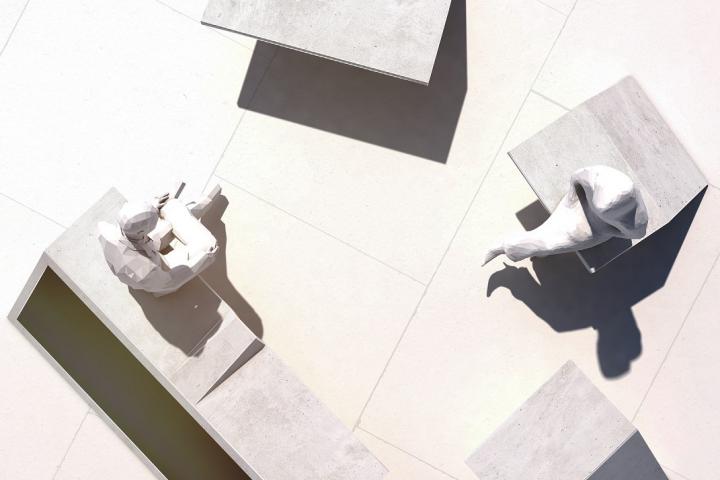
Intelligent technology can be added or removed according to the customer's needs even after placing the furniture in the field thanks to their easy accessibility and placement in the compact boxes. In addition, they can run without power, because when in limited mode, the bench can operate in its own drawing power from photovoltaic panel and battery, where energy is stored to cover operational needs when the sun does not shine. In case of mounting more sensors and other elements with higher electricity consumption, the bench can be connected to the electrical network to function as a hybrid system with the panel.
The original shape of the carbon reinforcement was tested in the laboratory and is copyright protected together with the design of the bench. These stronger and more durable materials are not subject to corrosion and the thickness of the concrete can be considerably smaller. Thanks to the material and the original molding, the bench is thus much lighter and thus easier to transport than if it were made of conventional concrete with traditional reinforcement.
Alongside the Urbis trade fair, the bench should be on display at several locations in Prague this year, where three pieces will be installed as part of the Technology Transfer for Smart Prague project (supported by the Prague Pole of Growth Operational Program).

